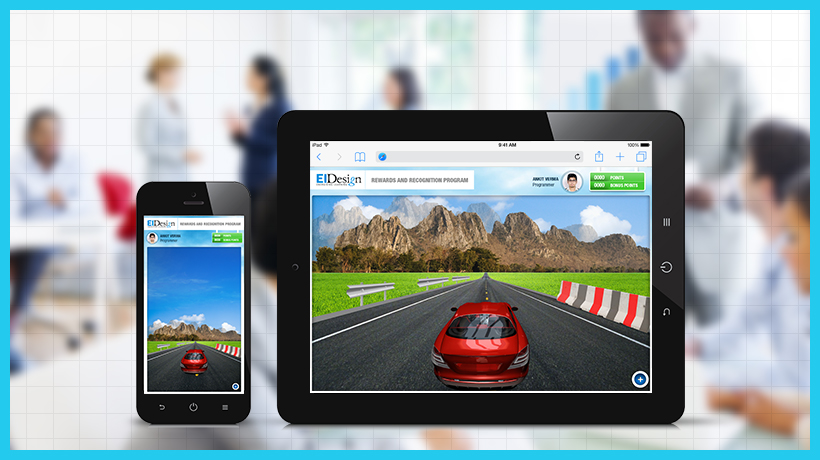
On-demand learning enhances retention and application and provides employees with what’s needed, when needed. This article outlines how you can leverage on-demand learning to improve learning in the flow of work and step up the application of learning on the job.
What Is On-demand Learning?
On-demand learning is an innovative approach to education and training that emphasizes accessibility, flexibility, and self-paced learning. It’s particularly relevant in today’s fast-paced and digitally connected world. This learning method allows learners to access educational content at their convenience, making it easier for individuals to seamlessly integrate learning into their hectic schedules.
Key Points of On-Demand Learning:
- Accessibility: Materials are available online, enabling learners to access them from anywhere, at any time.
- Self-Paced: Learners can progress through courses at their own speed, accommodating different learning styles and needs.
- Customization: On-demand learning often offers a range of topics and skills, allowing learners to tailor their education to their specific interests and career goals.
- Technologically Advanced: Utilizes modern technology, including mobile platforms and interactive media, to enhance the learning experience.
- Cost-Effective: Reduces the need for physical resources and infrastructure, often making it a more economical option compared to traditional learning methods.
On-demand learning transforms how individuals and organizations approach skill development and continuous learning.
For example, a customer service agent may review the terms of a cell phone’s warranty during new hire training. But understanding topics as esoteric as warranties are virtually impossible to remember in the first pass. The company’s training department may implement a series of searchable short, text-based Frequently Asked Questions (FAQs). So on-demand, the customer service agent can quickly find the applicable FAQ to efficiently answer customer questions. This would support the customer service department’s goal of high customer satisfaction and rapid turnaround and shorter call handle times.
Consider another example – a software vendor adds to their solution suite a new application that may enhance their customers’ business outcomes. The sales team is expected to communicate with potential customers, identify problems they’re trying to solve, and match those needs with applications their company produces. Sales team members can scan a library of short, informative videos that summarize each application, its purpose, and example case studies. The company can forgo expensive and time-consuming traditional courses and instead introduce and promote the video library for sales associates, saving the company time and increasing the effectiveness of the sales staff.
In both scenarios, on-demand learning is immediately applicable and leads to the application of the learning. Thereby, it saves both learners and the organization time and leads to increased effectiveness.
How Is On-demand Learning Different from Traditional Training?
On-demand learning differs significantly from traditional learning methods, offering a more flexible and technology-driven approach. Here’s how it stands out:
- Flexibility in Timing: Traditional learning often follows a set schedule, while on-demand learning allows learners to access content at their convenience.
- Location Independence: Unlike classroom-based learning, on-demand learning can be accessed from anywhere, removing geographical constraints.
- Pace of Learning: Traditional methods typically progress at a pace set by the instructor, but on-demand learning lets individuals learn at their own speed.
- Content Update and Relevance: On-demand learning platforms frequently update their content to stay current, whereas traditional textbooks or courses might not be as regularly updated.
- Interactive and Engaging: On-demand learning often employs interactive elements like videos, quizzes, and simulations, which might be less common in traditional settings.
The shift toward on-demand learning reflects the evolving needs of modern learners, who prioritize autonomy, efficiency, and relevance in their educational pursuits.
Characteristics of On-demand Learning
On-demand learning is characterized by several key features that make it distinct and effective for modern learners:
- User-Centric Approach: Focuses on the needs and preferences of the learner, allowing for a more personalized learning experience.
- Flexibility: Offers the ability to learn anytime and anywhere, accommodating various schedules and lifestyles.
- Diverse Learning Materials: Utilizes a range of multimedia content, including videos, podcasts, and interactive modules.
- Self-Paced Learning: Allows learners to progress at their own speed, enabling them to absorb information more effectively.
- Immediate Accessibility: Content is readily available, providing instant access to learning resources without delays.
- Continuous Updates: The learning material is regularly updated to reflect the latest information and trends.
These characteristics make on-demand learning a versatile and efficient approach to both education and professional development.
The Benefits of On-demand Learning
On-demand learning offers substantial benefits for both learners and organizations:
For Learners:
- Flexible Learning: Access courses anytime, fitting learning into busy schedules.
- Self-Paced Progression: Learn at a comfortable pace, enhancing comprehension and retention.
- Diverse Learning Resources: Access a wide range of materials catering to different learning styles.
For Organizations:
- Cost Efficiency: Reduces training costs associated with traditional methods.
- Consistent Training Quality: Delivers standardized content ensuring uniform learning experiences.
- Real-Time Skill Development: Quickly updates and deploys training for immediate skill application.
These benefits contribute to a more efficient, engaged, and skilled workforce, aligning with the evolving needs of modern organizations and learners.
Why Should L&D Teams Invest in Providing On-demand Learning?
Today’s learner often feels overwhelmed by several factors.
Employers expect employees to do more with less – for instance, sell more with less travel, close more tickets with fewer escalations, and produce better components in less time and with cheaper materials, to name a few examples.
On top of this, today’s learner faces a barrage of never-ending distractions, like:
- Mobile phone message alerts.
- Email requests for support and information.
- Coworkers located in various time zones.
- Multiple virtual meetings.
- Reminders for mandatory trainings (like Compliance Training).
- Global pandemics and civil unrest.
- Complications due to working from home with children.
These distractions exact a heavy toll on employees and their productivity. The human brain cannot multi-task. Instead, it switches tasks, resulting in lost focus.
On average, it takes 23 minutes for people to reach a state of flow that facilitates maximum efficiency, creativity, and effectiveness. However, even small distractions can disrupt a flow state.
Today’s learner may experience hours of lost productivity due to email and text messaging alone. Additionally, they are faced with continuously fast-paced changes and challenges to stay relevant. Skills and technologies continue to evolve, making it harder to remain relevant in competitive markets.
What the Modern Learner Needs and Expects – Today’s learner needs and expects time to develop themselves on the job, in the flow of work. In addition to pay and flexibility, one of the attributes most desired by employees is support for professional development.
These employees are less satisfied with traditional modes of training and require on-demand learning.
On-demand learning resources contribute to increased employee retention and engagement. Enterprise supported on-demand learning helps employees feel appreciated. Once employees reach a flow state, they may run into situations where they need additional information to complete or enrich their task. On-demand learning is not a distraction and helps maintain their flow. Formal training solutions, on the other hand, distract and disrupt flow states.
Why Is On-demand Learning the Key to Train the Modern Learner?
On-demand learning provides several benefits, listed below:
- Transitions learning from push to pull. No longer will employees require external inducements for motivation. They’ll seek learning on their own.
- Increases the quality of work as employees sharpen their skills and explore available knowledge.
- Enhances the application of learning.
- Helps you maintain the quality of formal training programs. You can use SMEs to contribute and review content contained in the performance support systems employees turn to for on-demand learning.
- Facilitates the application of learning by making those performance support systems as accessible as possible.
- Incorporates a blend of learning objects, from short text and image-based articles to pointed videos and access to managers and mentors.
- Includes in-depth self-paced eLearning and print resources that provide the nuance required for more complex topics.
- Allows employees the time required to master technical skills, including low-risk experimentation and practice.
What Strategies Can You Use to Drive On-demand Learning?
To support modern learners in this hectic world, employers should use these 10 strategies to drive on-demand learning:
- Implement self-paced online training and mobile learning.
- Leverage mobile appsthat provide on-demand learning to increase the application of learning.
- Incorporate microlearning strategies by keeping learning objects as focused and abbreviated as possible.
- Allow learners to personalize their on-demand content, curating and sharing when appropriate (curated and user-generated content can be a great asset as L&D teams build more formal training programs, seeking to enhance the application of learning).
- Share content in a social learning context and create social pressure for other employees – increasing the application of learning to modify behavior.
- Include stories in training objects, like case studies and user scenarios.
- Eliminate as many meetings and formal training sessions as possible.
- Replace formal training with informal, on-the-job, and on-demand learning.
- Create easy-to-access knowledge hubs, sometimes called performance support systems, to which employees can quickly refer for knowledge.
- Encourage deep work by fostering a culture of continuous learning.
On-demand learning, with its immediate applicability, enhances the on-the-job application of learning.
Best Practices for Driving On-Demand Learning
To effectively drive on-demand learning in an organization, consider the following best practices:
- Understand Learner Needs: Tailor content to meet the specific needs and preferences of your learners.
- Use Engaging Content: Incorporate interactive and multimedia elements to maintain learner interest.
- Provide Flexibility: Offer a variety of learning paths and allow learners to choose their courses.
- Ensure Accessibility: Make sure learning resources are easily accessible on multiple devices.
- Track Progress and Feedback: Regularly monitor learning progress and gather feedback for improvements.
These practices contribute to the creation of an engaging and effective on-demand learning environment, aligning with both learner and organizational goals.
How Can You Step Up the Application of Learning on the Job with On-demand Learning?
It may seem difficult to drive the application of learning, but the following strategies will help you step up the application of learning on the job with on-demand learning:
- Encouragelearning in the flow of work. Just-in-time learning increases the chances of learning application.
- Create awareness of on-demand learning.Showcase how it works through communication channels contributed by leaders from the top of the organization, highlighting success stories.
- Establish forums where employees can actively share knowledge, lessons learned, and curated content.
- Invest in a learning portalthat is accessible on any device – laptop, tablet, or phone.
Example of On-demand Learning
Let’s consider a hypothetical character, Sarah, a marketing executive in a mid-sized company. Sarah leverages on-demand learning to enhance her skills and contribute effectively to her organization.
- Scenario: Sarah needs to improve her digital marketing skills.
- On-Demand Learning Platform: Her company provides access to an online learning platform with courses in digital marketing.
- Learning at Work: Sarah enrolls in a course on SEO and content marketing. She watches videos during her commute and completes interactive exercises during breaks.
- Support from Organization: The company encourages learning by giving employees dedicated time each week for personal development.
- Outcome: Sarah applies new strategies in her marketing campaigns, leading to increased engagement and sales.
This example illustrates how employees can leverage on-demand learning to upskill and how organizations can facilitate this learning process.
Modern learners are faced with a myriad of challenges – increasing demands, rapidly evolving roles and changing market demands, and high-pressure social and device-driven distractions. On-demand learning counters those challenges, helping employees with the application of learning that results in enhanced on-the-job performance and success.



